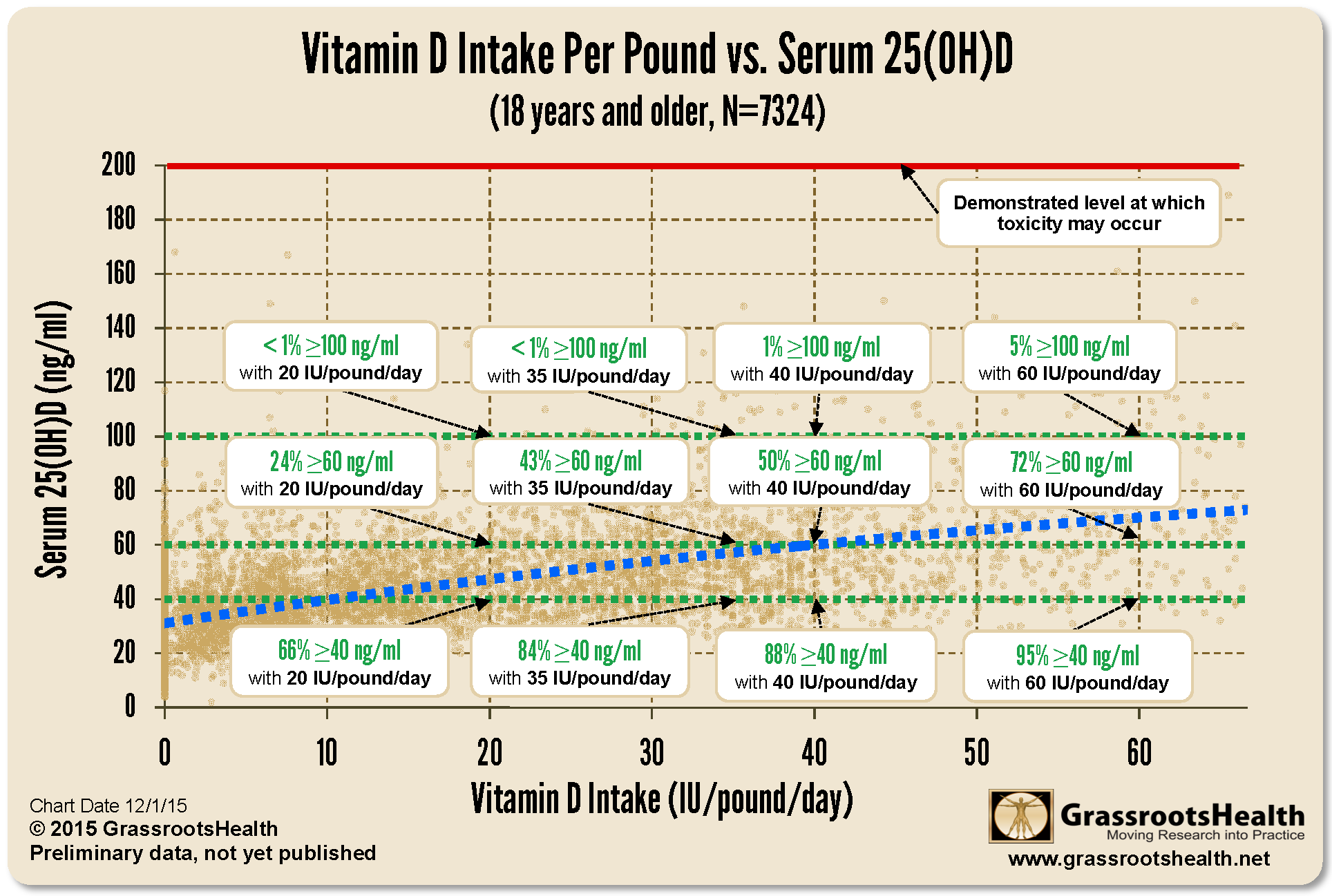Published on May 6, 2019
When taking and/or prescribing higher doses of vitamin D, it might be useful to know the likelihood of achieving a vitamin D serum level on the higher end of the 25(OH)D serum level spectrum, as well as the lower end. For this reason, GrassrootsHealth has created two charts using data from over 7000 D*action participants to show the probability of getting to a higher level so the value achieved could be put into perspective from a population standpoint.
On the chart below, you can see the percent of the population (based on a weight of 150 lbs) that achieves 40, 60, or 100 ng/ml with different intakes. For example, note that less than 1% of participants taking 5000 IU/day achieved a serum level of 100 ng/ml or higher, while 82% achieved a level of at least 40 ng/ml.
An additional chart is available to allow an individual to factor in their weight to calculate the same percentages, based on IU per pound.
Note: The red line at the top highlights the demonstrated level at which toxicity as measured by hypercalcemia may occur, 200 ng/ml; a level which is difficult to achieve with the doses referenced on the charts.
With the above charts to reference, an individual or physician can make a decision about what dose to try with the most comfortable results. Adjusted doses, however, will be based on the individual’s vitamin D test data.
Are you dosing according to your serum level?
Make sure you are using the correct dose of vitamin D by first knowing your level – and see if you are in the target range of 40-60 ng/ml (100-150 nmol/L). Find out your levels today! Log on to the shop (click the link below) to get your tests and see for yourself if your levels can be improved. Use coupon code SunMonth to receive 15% off plus free shipping during Sunshine Month only!
Make sure you track your results before and after, about every 6 months!
Click Here to Access the Shop Page
How can I track my sun exposure and my vitamin D levels?
To help you track your sun exposure and nutrient levels, GrassrootsHealth has created an online tracking system called myData-myAnswers. You can also track your supplemental and dietary nutrient intake to see how they impact your nutrient levels. Check it out today!









